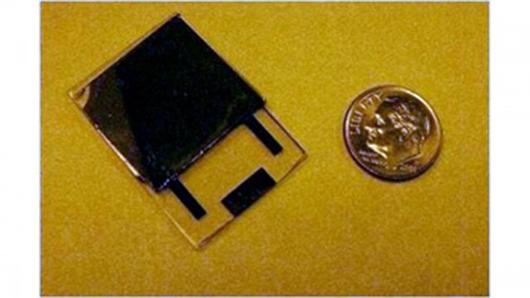博文
加州笔记之三十一 微型核电池
 精选
精选
|||

密苏里大学出了一个简报,该校的Kwon J. W.教授在物理应用快报上报道了最新的关于微型核电池的结果,这种新型的二次电池概念在能源领域研究比较少,但是由于能量密度比一般锂电池高几个数量级,所以在某些特殊环境下应用很有希望,如纳米卫星。核电池的提法比较吓人,但并不是我们通常所想的发生核裂变的链式反应输出能量,而是利用被辐射后的高能同位素衰变时逐步释放出的能量。Kwon在这个新工作中主要贡献在于利用金属硒作为能量接受体,避免了固体半导体材料在高能辐射下因为晶格发生畸变而失效。具体的工作原理是同位素硫35释放出高能beta射线激发半导体硒中处于价带的电子,造成电荷分离,半导体硒和金属电极形成肖特基势垒促进了电子和空穴的分离,当外电路加上载荷时,电子就会经由外加载荷奔向空穴结婚,灯亮了。Kwon目前得到的能量转换效率仅有1.2%,功率在nW级。
这种利用核辐射来制备电池是不是为核废料处理提供了一种能源回收的策略?
MU Researchers Create Smaller and More Efficient Nuclear Battery
Mizzou scientist develops a powerful nuclear battery that uses a liquid semiconductor
Oct. 07, 2009
Story Contact(s):
Kelsey Jackson, JacksonKN@missouri.edu, (573) 882-8353
COLUMBIA, Mo. – Batteries can power anything from small sensors to large systems. While scientists are finding ways to make them smaller but even more powerful, problems can arise when these batteries are much larger and heavier than the devices themselves. University of Missouri researchers are developing a nuclear energy source that is smaller, lighter and more efficient.
“To provide enough power, we need certain methods with high energy density,” said Jae Kwon, assistant professor of electrical and computer engineering at MU. “The radioisotope battery can provide power density that is six orders of magnitude higher than chemical batteries.”
Kwon and his research team have been working on building a small nuclear battery, currently the size and thickness of a penny, intended to power various micro/nanoelectromechanical systems (M/NEMS). Although nuclear batteries can pose concerns, Kwon said they are safe.
“People hear the word ‘nuclear’ and think of something very dangerous,” he said. “However, nuclear power sources have already been safely powering a variety of devices, such as pace-makers, space satellites and underwater systems.”
His innovation is not only in the battery’s size, but also in its semiconductor. Kwon’s battery uses a liquid semiconductor rather than a solid semiconductor.
“The critical part of using a radioactive battery is that when you harvest the energy, part of the radiation energy can damage the lattice structure of the solid semiconductor,” Kwon said. “By using a liquid semiconductor, we believe we can minimize that problem.”
Kwon has been collaborating with J. David Robertson, chemistry professor and associate director of the MU Research Reactor, and is working to build and test the battery at the facility. In the future, they hope to increase the battery’s power, shrink its size and try with various other materials. Kwon said that the battery could be thinner than the thickness of human hair. They’ve also applied for a provisional patent.
Kwon’s research has been published in the Journal of Applied Physics Letters and Journal of Radioanalytical and Nuclear Chemistry. In addition, last June, he received an “outstanding paper” award for his research on nuclear batteries at the IEEE International Conference on Solid-State Sensors, Actuators and Microsystems in Denver (Transducers 2009).
(谁找到第二篇文章和我说一声)https://blog.sciencenet.cn/blog-2317-261447.html
上一篇:加州阳光之九十八 高度机密的碳纤维材料
下一篇:就材料圈博文管理答王汉森等博友
全部作者的精选博文
- • 【河姆渡记事】陶瓷连接:全新的材料界面问题
- • 基金委的评审意见
- • 审基金
- • 继承
- • 我的基金评审意见及撰写
- • 国家自然科学基金的功用
全部作者的其他最新博文
- • 涂鸦两首
- • 特种纤维与核能材料工程实验室成功举办2016年度中期学术交流会
- • 故园梧桐
- • 小诗一首
- • 2015年实验室年度报告会